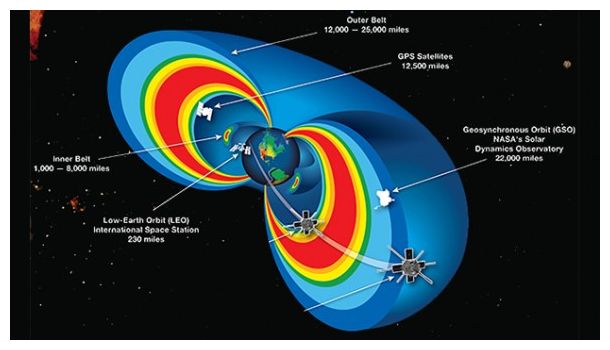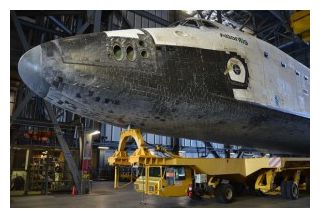| Topic: Physicists plan to wipe out Earth's Van Allen belts with rad | |
|---|---|
|
Graham Templeton Geek Thu, 27 Feb 2014 08:30 CST Van Allen Belt © Geek.com It was just last year that physicists thought they found the origin of Earth's Van Allen radiation belts - and now a prominent group of them want those belts dead! It's understandable, given the frustration these areas of space can cause to modern astrophysicists; if you want to launch a satellite or telescope, let alone a human being, the Van Allen belts will be a painful thorn in your side. So, says a growing group of astrophysicists, why not wipe them out altogether? It might seem odd to hear scientists propose destroying a feature of the natural world, but there is a decent scientific argument to be made that these belts provide us nothing useful, and that we could lose them without a single negative effect. The Van Allen belts are huge, dual-lobed areas of space around the Earth which are filled with high-velocity charged particles - electrons and protons whipping around the planet at near-relativistic speeds. For years it was thought that we had two distinct belts - but just recently that was updated to three. The belts, we now know, are caused by Earth's own magnetic field, which acts like a huge particle accelerator to ramp these ions up to dangerous speeds. Apollo astronauts were guinea-pigs in figuring out the human effects of traveling through the Van Allen belts - but we now know they're mostly dangerous to electrical equipment. The belts pulse and morph with the changing of the seasons, and a manned mission can usually get through with only a minimal increase in radiation exposure. 
© Geek.com The Van Allen probes helped NASA figure out the basic nature of the belts. Many satellites and other orbiting equipment have to shut off periodically, though, to avoid damage in the belts. That's a problem when launching equipment is often the single most expensive element of a mission; science will not abide a field that mucks with its experiments, nor even one that makes them ship expensive shielding into space. If there would really be no downside to destroying the belts, then why not just do it, if we can? Notice that there are two "ifs" in that statement. The second is the easier of the two: Can we clear the belts? A new proposition from scientists around the globe claims that very low frequency radio waves could be used to disburse Van Allen protons in the lower atmosphere, clearing several helpful new orbital distances for use by satellites and other equipment. Radio waves have problems getting through the highly charged ionosphere, which sits between us and the Van Allen regions, but scientists are hopeful that powerful emitters could mitigate this problem. Satellite-based VLF radio emitters have also been proposed, but such devices would take too much energy for an orbital platform. 
Space Shuttle © Geek.com The space shuttle has a “sandwich” of shielding for astronauts crossing the belts. One older idea for disbursing the belts was called HiVOLT, or High Voltage Orbiting Long Tether. This would be a system of five cables, each about 100 kilometers long, used to create a magnetic field that deflects the orbit of these particles. This could hypothetically change the orbital period of the particles so they either crash into the atmosphere or careen off into space - possibly thus disbursing the belts in as little as two months. Whatever the eventual method, there is a growing movement to say goodbye to the belts - which is our second "if": Will destroying one of Earth's most fundamental features have any negative side effects? The easy answer is: probably not. The Van Allen belts are a symptom of Earth's properties, not a property themselves, and as far as scientists can tell the swarm of high-velocity particles orbiting above us is unlikely to affect anything but the bets laid plans of space scientists. Also remember that these dispersion methods are only temporary; given enough time with no VLF waves or cables, the fields would form again for the same reasons they formed in the first place. We're used to affecting the Earth's surface through everything from dams to landfills, but are we ready to start converting space to our own needs? It's not a fundamentally different proposition, but one that seems unsettling to many people. If the plan goes forward over the next few years, expect to see significant push-back from environmentalists and other elements of the public sphere. |
|
|
|
|
|
Edited by
Conrad_73
on
Mon 03/03/14 11:23 AM
|
|
|
I can hear the Howls of the Conspiracy-Theorists already!
Wonder what Hypotheses they'll field! 
They would only be counteracted anyway! |
|
|
|
|
|
I can hear the Howls of the Conspiracy-Theorists already! Wonder what Hypotheses they'll field! 
They would only be counteracted anyway! the best line in the article: "Whatever the eventual method, there is a growing movement to say goodbye to the belts - which is our second "if": Will destroying one of Earth's most fundamental features have any negative side effects? The easy answer is: probably not."... glad they have it all figured out... 
|
|
|
|
|
|
Edited by
vanaheim
on
Thu 03/06/14 12:23 AM
|
|
|
Also known as the ionosphere, well the lower belt a contributor anyways.
No need to try to destroy them. Every time you send a body through them it diminishes them. Back in the 80s it was theorized they'd be largely gone by 2030 at contemporary pace of high orbit launches. These "scientists around the world" are by no means a consensus, but like an extremist right wing party being used to represent all politics. It's just one group, not a particularly rational group. Yes we need them. The ionized particles help deflect the solar wind. They're part of our magnetosphere. Without it, the atmosphere literally gets blown right off the surface of our planet, just like Mars. That simple. Back in the 80s there was terrific concern about the damage satellite launches was doing to the belts. That concern has increased, not suddenly been replaced by some counter-intuitive epiphany. A far greater, actual threat to any further manned orbits is nicely characterised by the recent movie "Gravity", the artificial space junk left up there for the last 60 years is far and away a greater danger to any manned orbits than anything else whatsoever. Only debris the size of a tennis ball can be tracked and avoided, but anything the size of a match-head will down a manned anything, and literally blow it smitherines in the process. There's tens of thousands of known artificial debris being tracked, estimates are in the realm of millions of pieces that utterly deadly to any manned mission that can't be tracked, and it just multiplies everytime one bit hits another bit. |
|
|
|
|








